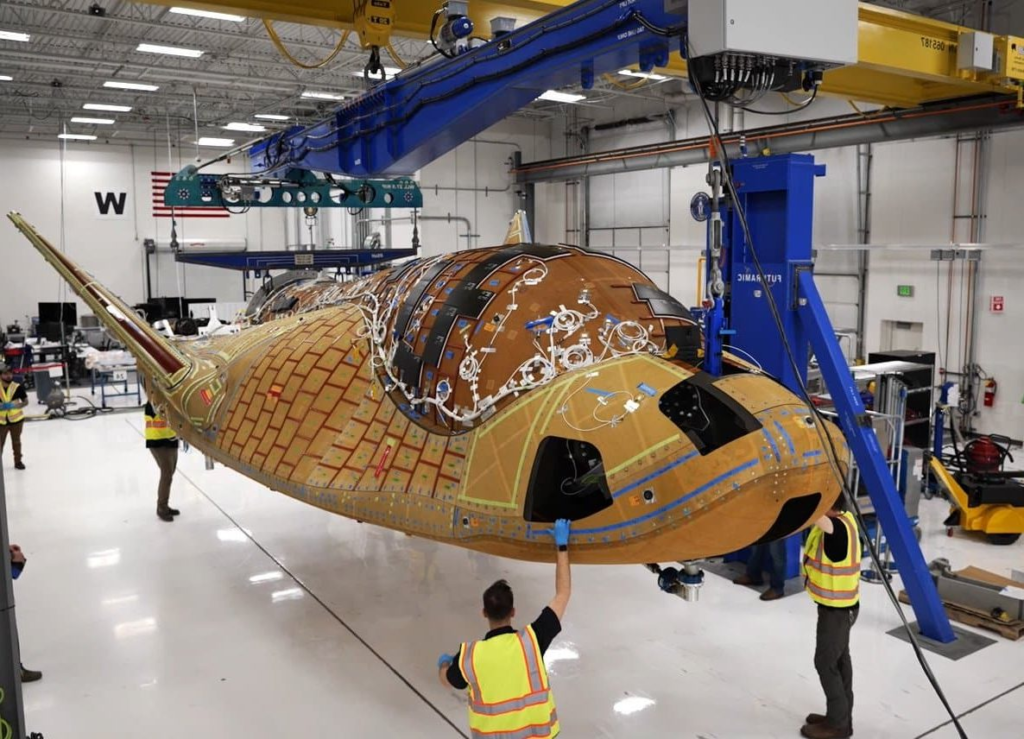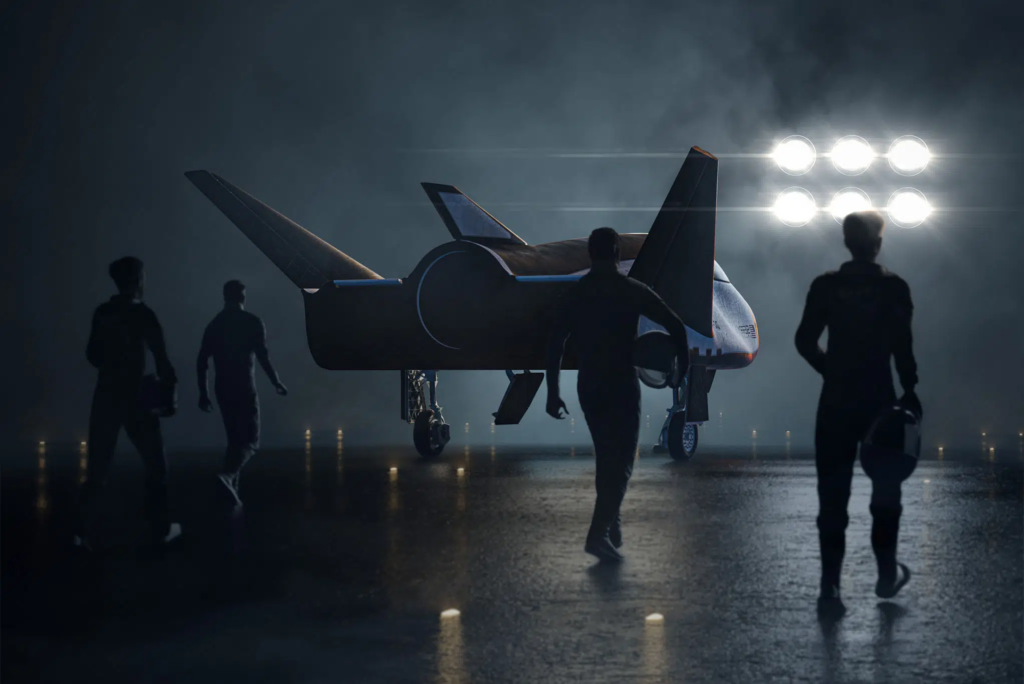
Sierra Space Reveals Work On New Dream Chaser Test Article
Sierra Space has been very busy over the past few years and especially recent months as they work towards the first official launch of Dream Chaser. This comes in addition to work on Orbital Reef and other projects. While the company has been working on this space plane for many years, now more than ever, some significant progress is being made.
Most recently the company has provided some consistent updates on Dream Chaser Tenacity. This is the first real Dream Chaser space plane expected to launch into space and return safely on a runway. However, just yesterday the company released a big update by revealing construction of the next Dream Chaser is already underway.
As of right now, under NASA’s Commercial Resupply Services 2, or (CRS-2) contract, Dream Chaser will provide a minimum of seven cargo service missions to and from the International Space Station. This is in addition to crewed launches further in the future. Sierra Space knows that in order to consistently launch in the future and continue through possible challenges, a fleet of space planes is necessary. Here I will go more in-depth into the second Dream Chaser, overall progress, what to expect, and more.
Recent Updates

The first and arguably most significant update came in the form of a tweet just yesterday. Here Sierra Space tweeted saying, “And then there were two.” This included an image of a new Dream Chaser under construction and already making progress. Taking a closer look at the image you can see the company has just started, the main core of the space plane is being worked on. The tweet caption, and then there were two, refers to this being the second Dream Chaser built for space operations. Over the past few months, we have seen different updates and construction time-lapses on Dream Chaser Tenacity, which is the first space plane Sierra Space is working on. In terms of the recent update, someone replied and asked if this picture was not Tenacity, Sierra Space responded, “Not Tenacity.” This is quite a big deal as Sierra Space seems to be ramping up the production of Dream Chaser.
It’s important to point out that there are two types of Dream Chaser space planes, this includes Uncrewed and crewed. Some of the main differences between the two include windows, environmental control, life support systems, and more. With this in mind, both of the current Dream Chaser models under construction are uncrewed variants. While the first uncrewed launch of Dream Chaser is not long from now, the company has a lot of testing to do before any human gets inside this spaceplane.
In addition to this update, about 1 week ago on the 24th, Sierra Space tweeted again this time focusing on Tenacity and its future. The company tweeted mentioning, “Emboldened by our resolve, our team is pouring incredible skill and dedication into preparing the first Dream Chaser spaceplane, appropriately named “Tenacity,” for its unshakable mission: to make space available to all humankind.” The tweet also included a short article that went more in-depth into what exactly Tenacity means and what the future of space access has to offer.
Right now Siera Space’s main focus is reaching orbit for the first time, docking with the ISS, and returning safely to Earth all in a single mission. This is the outline of the SNC Demo 1 mission. Here, Dream Chaser Tenacity will launch on top of United Launch Alliance’s Vulcan Centaur. Dream Chaser is not a launch vehicle in the sense that by itself, it cannot launch and escape Earth’s atmosphere. This being said, a big part of the space plane’s design revolves around the capability of launching on top of a host of different launch vehicles. This first mission has been delayed a few times for numerous reasons. As of right now, both ULA and Sierra Space are targeting February of 2023. This helps put in perspective the progress on Tenacity. By now the space plane test article is getting very close to being finished. Between now and February the company will continue to work on Dream Chaser and ensure it’s ready for the first flight. This will also be the second ever launch of ULA’s Vulcan Centaur if everything goes according to plan. While there are quite a few moving parts in this launch, progress from everyone involved is looking promising.
The reason this mission will see Dream Chaser Tenacity attempt to dock to the ISS is to deliver cargo. This Demo 1 mission falls under NASA’s Commercial Resupply Services, or (CRS). These are a series of flights awarded by NASA for the delivery of cargo and supplies to the International Space Station (ISS) on commercially operated spacecraft. The second phase of contracts (known as CRS-2) was solicited in 2014. These contracts funded a few different companies such as SpaceX, and Sierra Nevada Corporation. The upcoming mission is an important first step to build trust and eventually transport more than just cargo to the station.
Dream Chaser

Now that we know more about the space plane’s progress and upcoming mission, we can take a look at the spacecraft itself and what it has to offer. Dream Chaser is described as the first ever winged commercial spaceplane. It’s capable of gentle 1.5G runway landings, ideal for precious cargo, especially human passengers. In addition, it can accommodate more than 12,000 pounds of supplies and equipment, and is compatible with a wide array of current and future launch vehicles. As I partially mentioned prior, Dream Chaser features an uncrewed and crewed variant. Under NASA’s Commercial Resupply Services 2 (CRS-2) contract, Dream Chaser will provide a minimum of seven cargo service missions to and from the space station. With the help of the Shooting Star™ service module, Dream Chaser can deliver up to 5,500 kg of pressurized and unpressurized cargo to the space station, including food, water, supplies, and science experiments, and return to Earth. They highlight that Dream Chaser can return critical cargo at less than 1.5 g’s using a gentle runway landing. Designed for high reusability, this vehicle reduces overall cost, providing quick turnarounds between missions. The ability to liftoff on top of multiple launch vehicles and land at a wide variety of runways makes Dream Chaser a flexible option for reliable transportation. After leaving the space station, the Dream Chaser Cargo System also offers disposal services via the Shooting Star transport vehicle. Once separated from Dream Chaser, Shooting Star burns up safely in Earth’s atmosphere.
While the cargo operations are very valuable, Dream Chaser was originally designed as a crewed spaceplane, in part under NASA’s Commercial Crew Program, capable of carrying up to seven astronauts to and from the space station and other low Earth orbit (LEO) destinations. Dream Chaser is 30 feet, or 9 meters long—roughly ¼ the total length of the space shuttle orbiters—and can carry up to seven crew members. The crewed version of Dream Chaser is approximately 85% common to the cargo system, limiting primary changes to windows, environmental control, and life support systems. In addition, an integral main propulsion system is available for abort capability and major orbital maneuvers. The company often highlights the benefits of a runway landing. They point out that Dream Chaser really stands out from the crowd on how it comes home. The spaceplane can land on any compatible commercial-grade runway in the world, returning with a gentle landing. As might be expected, gentle landings can mean the difference between success and failure for a delicate microgravity science experiment or production prototype. Accordingly, runway landings avoid the dangers and stresses other options can produce, making its usage paramount for tomorrow’s fruitful space innovations. In comparison, (the use of capsules requires hard desert or water landings, which can be disastrous for delicate payloads.) Furthermore, recovery times are much shorter after the Dream Chaser lands. Precious (and intact) cargo can be unloaded in as little as 20 minutes.
One of the final main benefits of the Dream Chaser spaceplane is its multi-mission vehicle capabilities for supporting a variety of LEO needs. It can be customized for both domestic and international customers via vehicle configuration, launch site, destination, landing site, duration, and a host of other variables. Sierra Space has entered into agreements with multiple international space agencies. Together they are developing technologies, applications, and missions for Dream Chaser-based space systems. The more the company works with others, the more launch options and landing sites they will have access to around the world. These are just some of the unique features that Dream Chaser offers.
Conclusion
Sierra Space is moving full steam ahead as they prepare for the first official launch of Dream Chaser Tenacity. While this spaceplane is making impressive progress, they also released information about the second Dream Chaser already under construction. We will have to wait and see how it progresses and the impact it has on the space industry.
